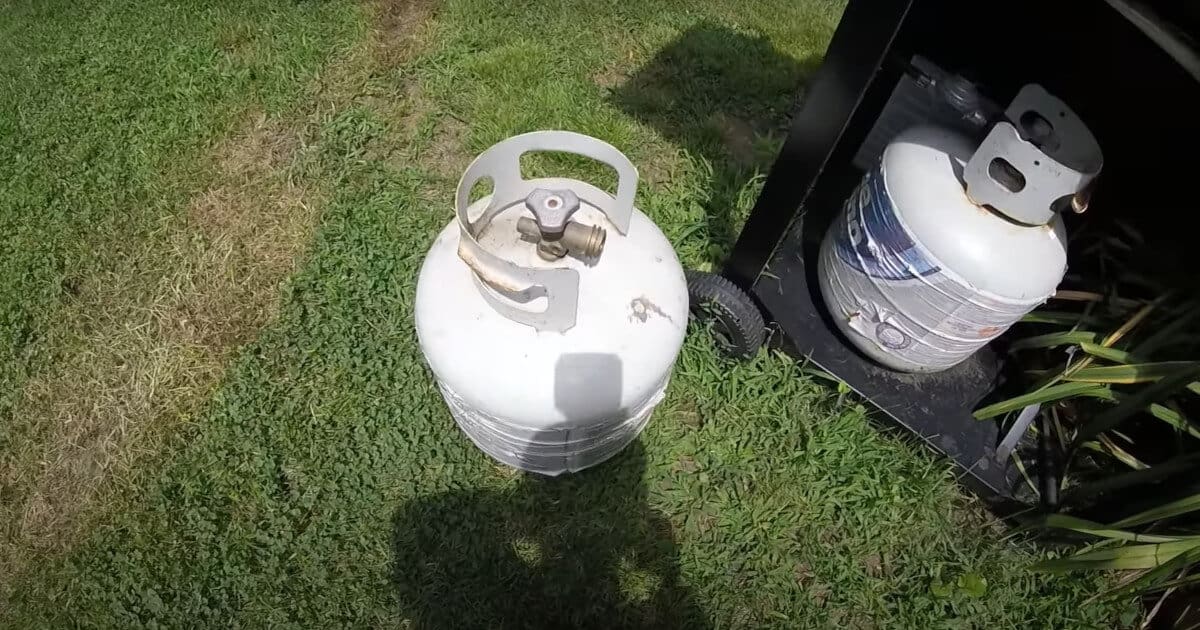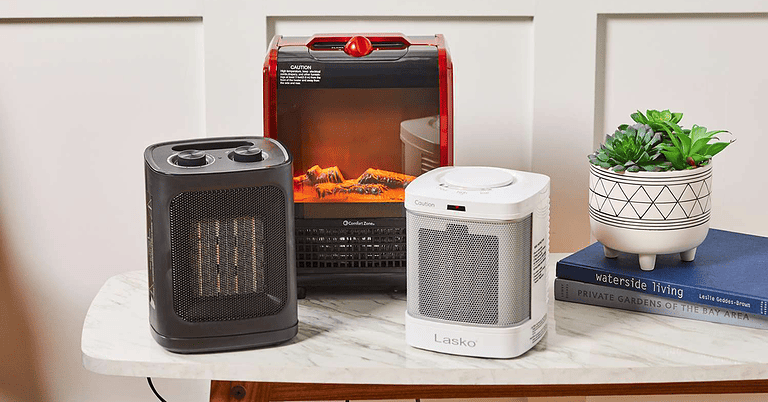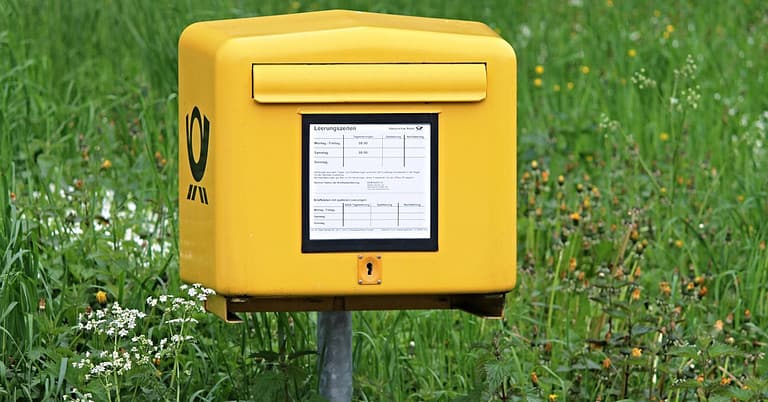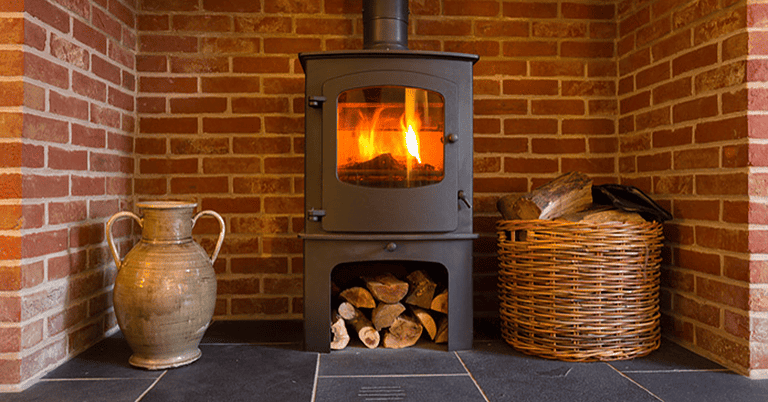What Is Propane Tank Condensation
Concerns may be raised if gas cylinders or propane tanks appear to be “sweating,” especially if you are unsure of its cause or whether it poses a threat. Although it occurs at home, cylinder sweating is most prevalent in hotels and dining establishments.
Why do you see condensation on propane tank when the surrounding area has a regular temperature? On a propane tank, sweating is typical and happens more than you may realize.
When gas is being used, the propane tank gets colder, and if there is sufficient humidity present, condensation, frost, or water forms on the propane tank. Condensation appears as the propane inside the tank falls below the dew point.

In addition, you can find a propane tank cold and sweating if the regulator feeds the propane too quickly. Sometimes, the moisture turns to ice, where the tank can “ice up” in cold temperatures, preventing liquid propane inside from boiling and producing enough vapor pressure to fuel the appliance.
Although typical for your cylinder to sweat, if there’s lots of condensation, you may wish to reduce it. in our guide, you can learn more about what makes your tank colder and thus condensing. By the end, you’ll see it’s the same phenomenon as putting alcohol on your skin and feeling the cooling effect as the liquid evaporates. (Read Can You Lay A Propane Tank On Its Side)
Is It Normal for Gas Cylinders to Sweat?
To begin with, propane, or liquefied petroleum gas (LPG), is held in these cylinders in a liquid condition, and this occurrence is referred to as “cylinder sweating.”
Natural vaporization occurs when propane is extracted from a tank, turning the liquid gas into vapor.
Your grill or appliance can light up since the converted propane is forced through the burners. Natural vaporization occurs at a slow rate, and as use rises, so does the use of the propane supply.
Here, you can see that as the conversion rate rises, the vaporization rate reaches a point it can’t keep up.
As this happens, the LPG liquid inside the tank carries out a heat transfer from the atmosphere to carry on vaporizing. As a result, the temperature and pressure drops, and water vapor condenses because of the cooling action.
What Factors Cause Tank Condensation?
Here are some ways to get condensation and puddling water in propane tank use.
Propane has qualities that make it store substantially cooler than other fuels relevant to the surrounding atmosphere.
Even though its use in automobiles and home heating is not significantly different from that of natural gas and gasoline in the same applications.
Because of this, the exterior of propane tanks frequently accumulates with water buildup.
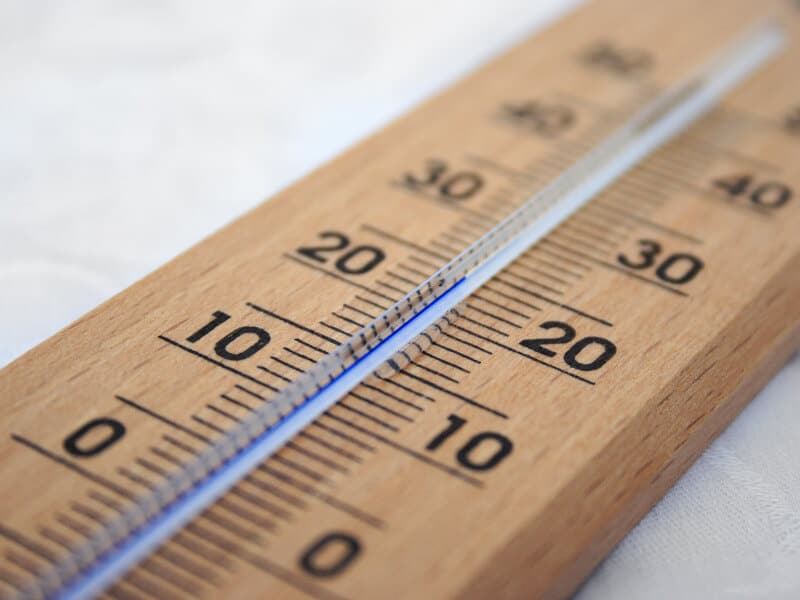
Temperature
Because of temperature differences between the air around a propane tank’s exterior and the propane inside the tank, condensation can form on the tank’s exterior and you.
The liquid propane transforms into a vapor that swiftly cools when you remove propane gas from the tank.
Condensation will form on the tank if the air temperature outside is sufficiently different. This is comparable to how moderate ambient temperature causes condensation to form on the outside of a glass of ice water.
Regulators
Sometimes the conversion of propane from liquid to vapor happens so quickly that it causes the regulator valve to freeze or, at the very least, cause condensation to build up on the outside.
The method used here is the same as condensation built up on the propane tank’s exterior.
Condensation will frequently transform into ice crystals due to the proximity to propane vapor, which is significantly colder than the liquid. This also takes place during transferring natural propane.
Liquid Level In Your Tank
The condensation on the tank outside depends on how much propane is in the tank. Generally, as a propane tank is filled with more propane liquid, condensation will build up more on the outside of the tank.
The cause of this is straightforward: Propane liquid inside a tank absorbs heat from the atmosphere, resulting in condensation on the outside.
Therefore, more condensation will happen as the tank’s liquid level rises. A high propane concentration will lead to a high condensation concentration.
It is worth noting that the condensation is from the liquid state propane in the tank and below. Where the gas sits inside the container, it will be dry.
Thus the level moves as the amount of gas reduce, so you have a hand to see how much propane gas you have left. (Learn How Long To Leave Straw On Grass Seed)
How To Avoid Condensation
While it is not typically required to do so, it is feasible to prevent condensation development on the exterior of a propane tank. Condensation forms on propane tanks and is typically natural and need not be avoided.
But in situations when you may camp and use portable tanks in a small location, it may become an issue to stay dry while you sleep.
Place an inside propane tank close to a dehumidifier or on a drain pan that will allow condensation to drip off and into a drain to prevent excessive condensation as the high-pressure tank will cool and condense according to use and the surrounding temperature.
Drips
Propane serves as fuel in many transportation fleets, and it’s a standard fuel for heating the home.
Propane tanks will gather more condensation on the outside when the tank contains more significant levels of propane liquid.
This is simple: Liquid propane turns to gas and gathers heat from the outside, causing condensation and pressure inside where the boiling point drops. And condenses in the surrounding air.
What To Do About Propane Gas Tanks Excess Condensation?
There are a few techniques to handle condensation, even if it is entirely natural. For example, propane tanks regularly have water on the outsides of tanks and cylinders as vapor form on the inside.
You might put the propane tank in a space with a dehumidifier to prevent this excessive condensation. The condensed water can run outside the tank and into a drain if the tank is set up on a straightforward drain pan.
If the problem persists, you can use certain LOT cylinders that take care of the possibility of cylinder sweating. Although it’s probably unnecessary, the LOT, or liquid off-take, technology has the potential to reduce the creation of condensation.
Always keep the cylinder or tank far from flames and in a room with surrounding air ventilation. It will help if you abode by the manufacturer’s instructions to avoid any tank problems.
Does LPG Gas Freeze in Winter
Since LPG gas has a freezing point of -306.4 °F (-188 °C), it does not freeze. Many people want to know if the LPG-propane tank ever gets too cold to function.
Wintertime LPG does not freeze. Additionally, it should function properly if you buy propane and don’t live in Antarctica. Butane will stop vaporizing if you have it and the temperature falls below freezing.
Propane Gas Tank Frost
Propane tank frost forms when liquid propane absorbs heat from the tank’s steel walls to boil and vaporize. Boiling happens at -42°C (-43.6°F), making tank walls chilly. This, plus humidity, causes propane tank frost.
Ice on Propane Tank
At 1 atmosphere of pressure, LPG-propane boils at -42°C (-43.6°F). The propane gas absorbs heat from the surrounding air through the steel tank walls.
Because of the cool tank walls and surrounding humidity, ice can form on a propane tank as your extract propane gas with your appliance.
When liquid gas inside a tank pulls heat from the steel walls to boil and vaporize, ice forms on the tank because of the propane process, and the temperature drops below freezing point.
Because of the boiling point of -42°C (-43.6°F), the tank walls become chilly. If you combine this with some surrounding humidity and wait long enough, ice will form on a propane tank.

